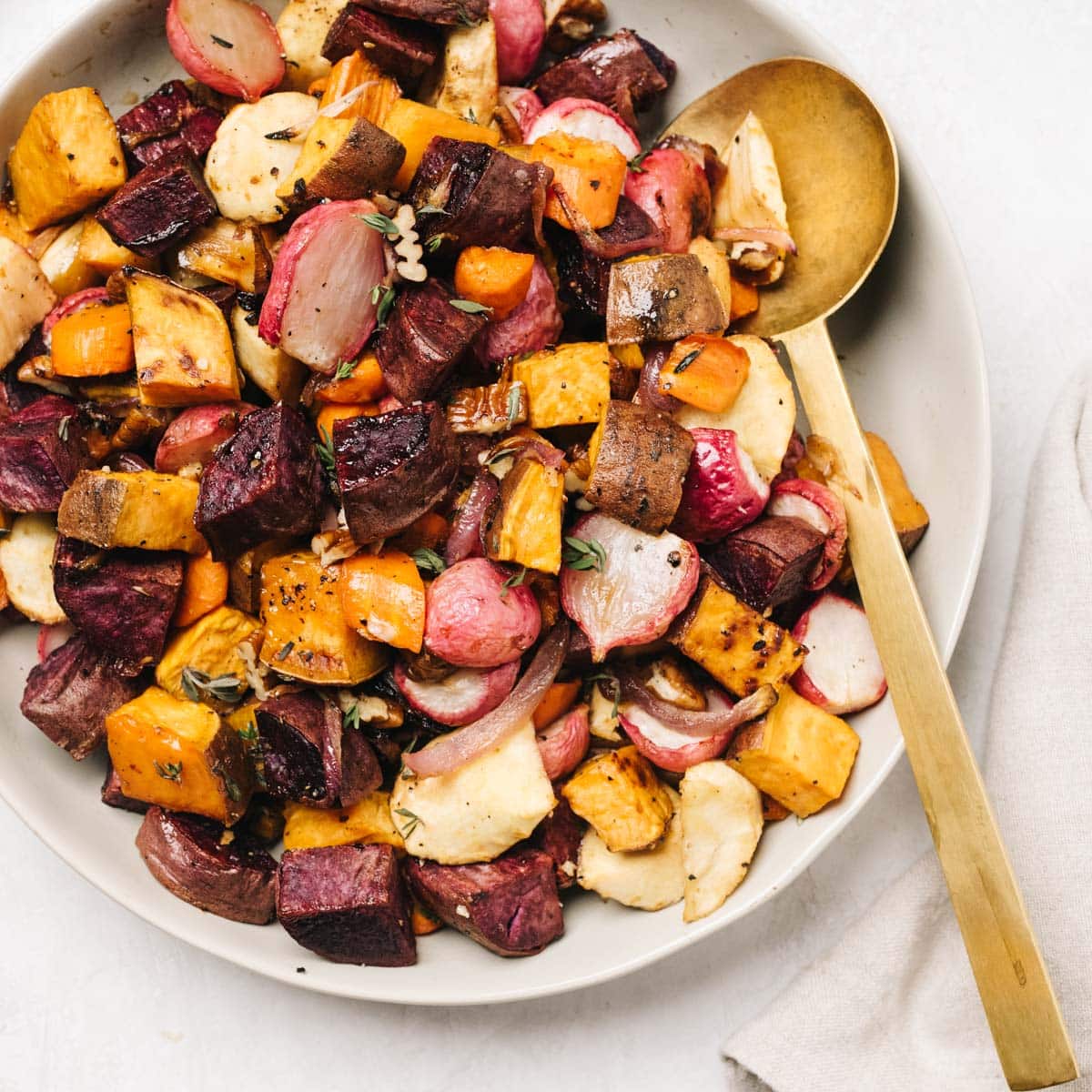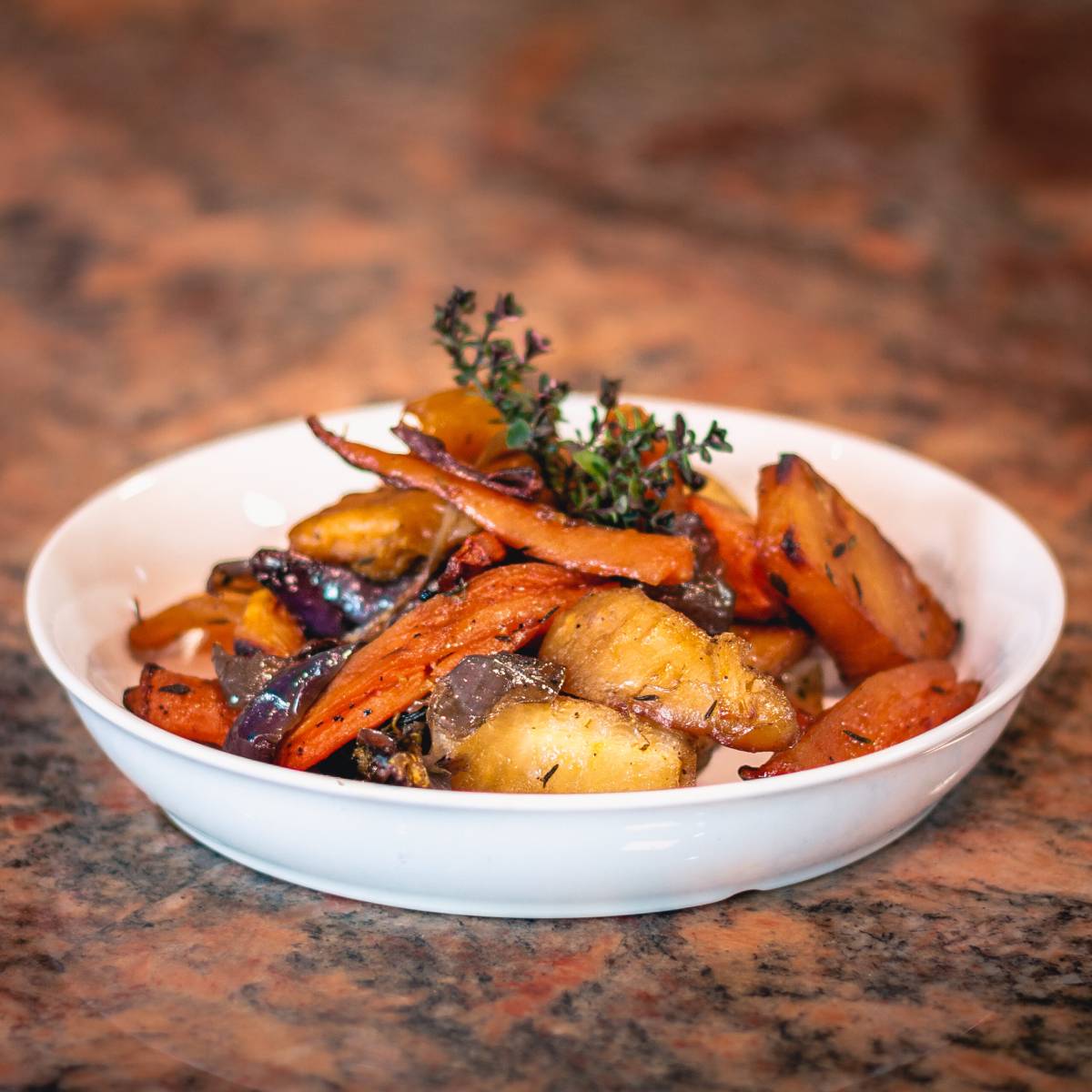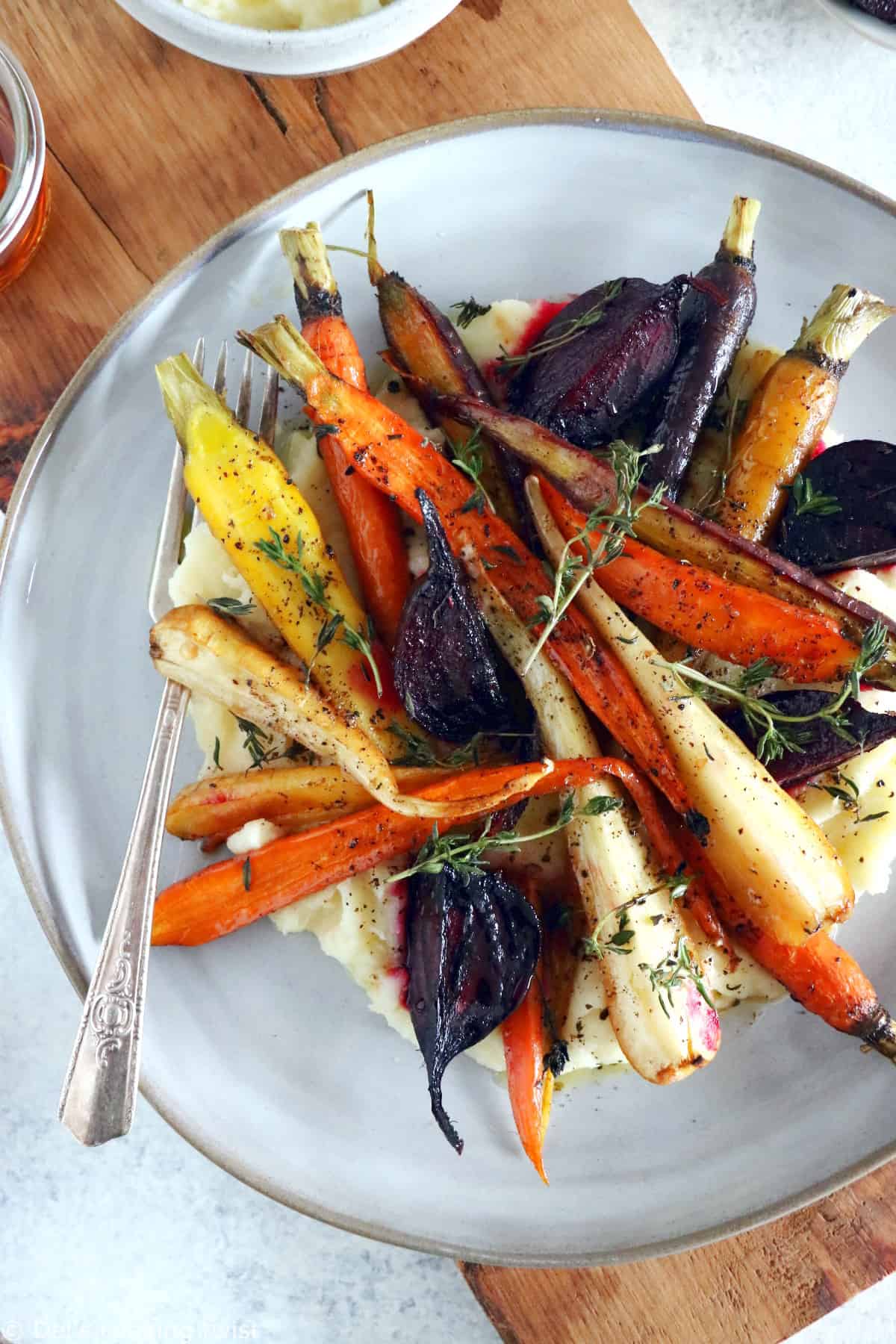
The Sweet Embrace of the Earth: Traditional Native American Roasted Root Vegetables with Maple
The North American continent is a tapestry woven with the threads of ancient traditions, and among the most enduring are the culinary practices of its Indigenous peoples. For millennia, Native American communities have lived in harmony with the land, developing a profound understanding of its bounty. This intimate connection is perhaps most beautifully expressed in their relationship with root vegetables – the humble yet nourishing treasures that lie beneath the soil. When these earthy delights are roasted and kissed with the sweet, amber nectar of maple, a dish emerges that is both deeply ancestral and exquisitely flavorful: Traditional Native American Roasted Root Vegetables with Maple.
This dish is more than just a meal; it’s a testament to resourcefulness, a celebration of the harvest, and a profound expression of gratitude for the earth’s sustenance. The practice of roasting roots is an ancient one, predating metal cookware and advanced cooking techniques. Indigenous peoples utilized fire pits, hot stones, and even buried their vegetables in embers to coax out their inherent sweetness and tenderize their dense flesh. The addition of maple syrup, a resource meticulously tapped and transformed from the sap of maple trees, further elevates this dish, infusing it with a uniquely North American sweetness that complements the natural flavors of the roots.
A Symphony of Flavors and Textures:

The beauty of this dish lies in its inherent simplicity and the exquisite interplay of flavors and textures. The roots, when roasted, undergo a magical transformation. Their starches break down, caramelizing at the edges, creating a delightful contrast between tender, yielding interiors and slightly crispy exteriors. Each root brings its own distinct personality to the mix.
- Sweet Potatoes (or Yams): Often a staple, their vibrant orange flesh and inherent sweetness provide a rich, satisfying base. Their natural sugars caramelize beautifully, creating pockets of intense flavor.
- Parsnips: These pale, elongated roots offer a nutty, slightly peppery sweetness that becomes more pronounced with roasting. They add a sophisticated depth to the medley.
- Carrots: Another classic, carrots contribute their familiar sweetness and vibrant color. Roasting intensifies their sugar content, making them even more appealing.
- Potatoes (various types): Whether it’s the creamy texture of Yukon Golds or the earthy robustness of red potatoes, these provide a comforting and familiar element. Their starchiness helps to create a satisfying and grounding component of the dish.
- Turnips and Rutabagas: These often overlooked roots offer a more complex flavor profile, with a pleasant bitterness that balances the sweetness of other vegetables. Roasting mellows their pungency, revealing a subtle, earthy charm.
- Jerusalem Artichokes (Sunchokes): These knobby tubers, native to North America, boast a unique, slightly sweet, and nutty flavor with a texture reminiscent of water chestnuts. They add an interesting textural and flavor dimension.

The maple syrup acts as a harmonious conductor, binding these diverse flavors together. Its rich, complex sweetness, with notes of caramel and sometimes even a hint of oak, doesn’t overpower the natural taste of the roots. Instead, it enhances them, adding a glossy sheen and a delightful sticky coating that makes each bite irresistible. A touch of salt, a primal seasoning, is essential to balance the sweetness and bring out the full spectrum of flavors. Herbs, often those readily available from the wild or cultivated gardens – such as wild sage, thyme, or rosemary – can be added to provide an aromatic complexity and a grounding herbaceousness.
A Culinary Legacy Rooted in Resilience:
The preparation of root vegetables has always been crucial for Native American survival and well-being. These hardy crops could be stored for long periods, providing vital nourishment through the lean winter months. Their cultivation and harvesting were deeply intertwined with the seasons and the spiritual beliefs of the various tribes. The process of digging for roots was often a communal activity, reinforcing social bonds and the transfer of knowledge between generations.
The discovery and utilization of maple sap and syrup represent another remarkable feat of ingenuity and observation. Native peoples learned to identify maple trees, understand the timing of the sap flow, and develop methods for collecting and boiling the sap down into a concentrated, sweet syrup. This was a labor-intensive process, requiring patience and skill, and the resulting syrup was a highly prized commodity, used not only as a sweetener but also as a medicinal agent and a ceremonial offering.
When these two elemental components – the earth’s roots and the tree’s sweetness – are combined, it’s a culinary dialogue that spans centuries. It speaks of a deep respect for the natural world and an understanding of how to transform raw ingredients into nourishing and delicious sustenance.
Modern Interpretations, Ancient Soul:
While the traditional methods of roasting in earth ovens are largely historical, the spirit of this dish lives on in modern kitchens. Contemporary Native American chefs and home cooks continue to honor this legacy, adapting it with readily available ingredients and modern cooking techniques. The core principle remains the same: celebrating the inherent goodness of root vegetables and the unparalleled sweetness of maple.
This dish is incredibly versatile. It can serve as a hearty side dish to roasted meats or poultry, a flavorful vegetarian main course, or even a comforting breakfast alongside eggs or a grain. Its warmth and sweetness make it particularly well-suited for autumn and winter meals, evoking a sense of cozy abundance.
A Recipe for Connection:
Creating this dish is an act of connecting with a rich cultural heritage. It’s an opportunity to appreciate the ingenuity and resilience of Native American peoples and to savor the simple, profound flavors that have sustained them for generations. The act of peeling, chopping, and roasting these earthy treasures, then coating them in the golden embrace of maple, is a meditative experience. It’s a reminder that some of the most delicious and meaningful meals are those that are deeply rooted in the earth and steeped in tradition.
The next time you find yourself with a bounty of root vegetables and a bottle of pure maple syrup, consider embracing this ancient culinary tradition. It’s a journey for the palate, a connection to the past, and a truly delicious way to honor the enduring legacy of Native American cuisine.
Recipe: Traditional Native American Roasted Root Vegetables with Maple
This recipe offers a contemporary approach to a timeless dish, focusing on accessible ingredients and straightforward preparation. Feel free to adapt the root vegetable selection based on availability and personal preference.
Yields: 4-6 servings
Prep time: 20 minutes
Cook time: 40-50 minutes
Ingredients:
- 2 lbs mixed root vegetables (e.g., sweet potatoes, parsnips, carrots, Yukon Gold potatoes, red onions), peeled and cut into 1-inch chunks
- 1/4 cup pure maple syrup (Grade A Dark or Very Dark for richer flavor)
- 2 tablespoons olive oil or melted unsalted butter
- 1 teaspoon sea salt, or to taste
- 1/2 teaspoon black pepper, or to taste
- Optional additions:
- 1 teaspoon dried herbs (such as thyme, rosemary, or sage), or 1 tablespoon fresh chopped herbs
- A pinch of red pepper flakes for a hint of heat
Equipment:
- Large baking sheet
- Large mixing bowl
Instructions:
-
Preheat Oven: Preheat your oven to 400°F (200°C). Line a large baking sheet with parchment paper for easier cleanup, if desired.
-
Prepare the Vegetables: Wash and peel all your root vegetables. Cut them into uniform, bite-sized chunks (approximately 1-inch pieces). This ensures even cooking. For example, cut sweet potatoes, parsnips, and carrots into similar-sized pieces. Potatoes can be cut into slightly larger chunks as they tend to cook a bit faster. Red onions can be quartered or cut into wedges.
-
Season the Vegetables: In a large mixing bowl, combine the chopped root vegetables. Drizzle with the olive oil or melted butter. Sprinkle with salt and pepper. If using dried herbs or red pepper flakes, add them now. Toss everything together thoroughly to ensure the vegetables are evenly coated.
-
Initial Roasting: Spread the seasoned vegetables in a single layer on the prepared baking sheet. Avoid overcrowding the pan, as this will steam the vegetables instead of roasting them. If necessary, use two baking sheets.
-
Roast: Place the baking sheet(s) in the preheated oven and roast for 25-30 minutes, or until the vegetables are beginning to soften and show the first signs of browning.
-
Add Maple Syrup: Carefully remove the baking sheet from the oven. Drizzle the maple syrup evenly over the partially roasted vegetables. Gently toss the vegetables on the baking sheet to coat them with the maple syrup. If using fresh herbs, you can add them at this stage.
-
Final Roasting: Return the baking sheet to the oven and continue roasting for another 15-20 minutes, or until the vegetables are tender throughout and nicely caramelized at the edges, with a glossy sheen from the maple syrup. Keep an eye on them during this final stage to prevent burning.
-
Serve: Remove from the oven. Taste and adjust seasoning with additional salt and pepper if needed. Serve hot as a delicious side dish or a flavorful vegetarian main.
Tips for Success:
- Vegetable Variety: Don’t be afraid to experiment with different root vegetables like beets (they will color everything, but are delicious!), celeriac, or even kohlrabi.
- Uniformity is Key: Cutting vegetables into similar sizes is crucial for even cooking.
- Don’t Overcrowd: Allow space between the vegetables on the baking sheet for optimal roasting and caramelization.
- Maple Quality: Use 100% pure maple syrup for the best flavor.
- Fresh Herbs: For a more vibrant flavor, add fresh chopped herbs like parsley, chives, or cilantro just before serving.
Enjoy this taste of ancestral wisdom, a simple yet profound dish that celebrates the sweetness of the earth.


